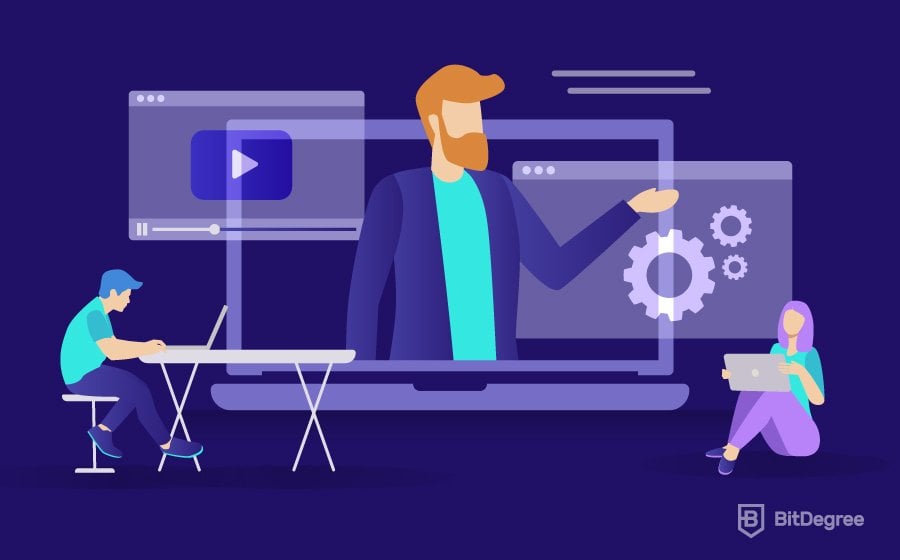Why Employee Training Is a Good Idea
Implementing consistent learning and development strategies in a company is a multi-layered process that goes a lot further than merely teaching staff members how to do their job. Naturally, it also provides both the individual employees and the organization with a variety of valuable benefits:
- A boost in employee motivation – an employee who participates actively in staff development activities is more likely to not just feel confident about their own abilities but also trust the employer who invests in their professional growth
- Better staff retention – providing your employees with a chance to improve makes them feel more valued and increases their loyalty to the organization
- More flexibility in teams – going further than basic employee training and allowing people to gain a variety of hard and soft skills makes them better in collaborations and handling unexpected situations
- More consistency in terms of expertise – long-term staff development allows the teams to fill knowledge gaps caused by different levels of practical experience and allow for more constructive teamwork
- Stronger leadership skills – by teaching your employees to communicate better, make data-based decisions, and focus on strategy, you can help them grow from excellent followers to inspiring leaders
- Improved performance and efficiency – the more expertise an employee has, the less likely they are to make mistakes and waste time fixing them
- Higher client satisfaction – upskilling your team members makes them more capable of detecting the customers’ needs and approaching them the right way
All these improvements in exchange for investing a little time sound like an incredible deal, so it’s no wonder so many Learning and Development professionals plan to launch new upskilling (51%) and reskilling (43%) programs in their organizations. Feeling like it’s something you should be focusing on right now too? Let’s see what options can help you with effective and hiccup-free staff development.
How to Approach Staff Development
Needless to say, when it comes to staff development, the precise steps you should take depends hugely on the organization and its primary objectives. However, there’s a handful of processes that are equally relevant in the majority of professional teams.
When we think of employee training, it’s often the introductory training that comes to mind. Stopping here, of course, is a massive mistake – but if you treat it as a solid first step and not the whole journey, it can be instrumental in shaping a strong and capable team. It’s especially important in remote work situations where it’s a lot harder for the new person to constantly ask questions and for their mentor to simply demonstrate something on the spot. Therefore, it is crucial to define clear training plans and prepare all-inclusive documentation with all the necessary information the new hires could quickly and easily refer to.
Of course, having a guide or a slideshow is not going to cut it, however informative it is. A massive part of successful staff development is listening to the feedback and adapting your approach accordingly – therefore, the process must involve human interaction. Make sure to dedicate time for check-ins and 1-on-1s, whether face-to-face or on your screen: an honest talk, accompanied by face and body language, is always going to tell you much more than a filled form!
When it comes to long-term staff development, try to find a balance between hard and soft skills. The latter, which are also known as ‘interpersonal skills’, can sometimes fall into the background, as they’re trickier to define and evaluate – however, they are vital for team players and aspiring leaders. Soft skills include but are not limited to communication, time management, and problem solving and help your employees grow on a personal as well as professional level.
Selecting the Right Tools
Introductory training might seem pretty straightforward, but once you’re past the stage, organizing learning and development processes might get a bit more challenging. Building an office library and sending your specialists to seminars or conferences is great – unfortunately, it’s somewhat sporadic and not equally relevant to the whole team.
Employee training specialists cite the small size of the team and time constraints as the biggest hurdles in implementing staff development solutions – and they’re not wrong. Accommodating the needs and interests of every individual is certainly tricky if you’re insistent on face-to-face learning. Luckily, the innovative technologies of today can help you avoid these issues.
As specialists discuss corporate training, two terms are often used – LMS (learning management system) and LXP (learning experience platform; in our previous guide, we have explained the similarities and differences between the two in detail. Both can be highly beneficial for staff development in different ways: LMS learning is irreplaceable for mandatory training and compliance, and LXP is an excellent tool for more informal learning and staff development.
If you are interested in providing your employees with a possibility to continuously and efficiently improve their personal and professional skills, one of the best solutions could be investing in an LMS that has added LXP-like functionalities. For example, BitDegree Studio allows you to both upload your own company’s internal training materials and use hundreds of courses from its content library while still keeping the process administrator-managed and easy to track.
Conclusions
You might have heard about businesses that follow the faulty logic of not helping their employees to get better at their jobs in fear of losing them to a better employer. Their issue is, they never stop to think about how they themselves could actually become better employers.
Ensuring high-quality staff-development is an absolute win-win for a company: not only does the productivity and performance of its employees rise, but their loyalty and trust in their managers skyrocket. Investing in LMS training might be one of the easiest and most effective ways to ensure every member of your staff has a chance to boost their knowledge at a convenient time and gain a solid set of skills needed to excel in their position. Still unsure about the way it works? You can request a demo or check out the free trial of BitDegree Studio anytime!











